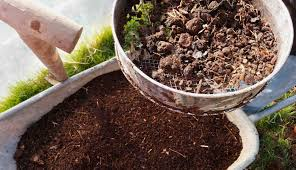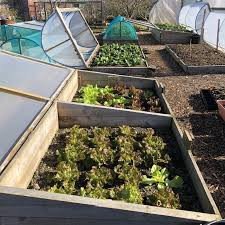Growing your own fruits and vegetables not only guarantees fresh, healthy produce but also offers immense satisfaction. To maximize your garden’s productivity, you must make the most of the available space. Here are five essential steps to help you plan a garden that thrives year-round.
1. Create Healthy Soil
The foundation of a productive garden is healthy soil. Enrich it with well-rotted organic matter, such as garden compost or manure, preferably from sources that avoid persistent herbicides. Organic matter provides essential nutrients and beneficial microbes that improve soil structure. It helps sandy soils retain moisture and enhances drainage in clay soils.
Before planting, mix organic matter into the soil, or if you prefer no-dig gardening, spread it on top and let worms incorporate it naturally. For established plants like fruit trees, add organic material around their base to improve growth. By ensuring your soil is fertile and well-drained, you set the stage for a healthy, bountiful garden.

2. Plan Your Vegetable Garden
Effective planning is crucial for optimizing your garden space. By knowing what, when, and where to plant, you can minimize empty spaces and maximize your harvest. Tools like a Garden Planner can help you visualize your garden’s layout by placing structures such as fences, paths, or raised beds. Plan your crops to ensure each space is filled, leaving no room for weeds.
Consider crop rotation and succession planting to maintain continuous harvests. For instance, after harvesting early peas, you could plant leeks, and replace onions with spinach. By planning in advance, you can avoid gaps in production and enjoy a steady supply of fresh produce throughout the season.
3. Choose the Right Varieties
Maximizing yields means choosing the best varieties suited to your space and climate. Heavy-yielding plants like pole beans, zucchini, and kale are great choices. Pole beans use vertical space, allowing you to grow more in less area. Fast-growing crops, such as radishes or salad greens, can be sown multiple times in a season for several harvests.
Also, consider hybrid varieties bred for better disease resistance or higher yields. For example, some apple varieties can be eaten fresh or cooked. Select varieties that thrive in your garden’s conditions for a more productive harvest.

4. Grow Year-Round
A productive garden doesn’t stop in summer. Extend your growing season by starting seeds indoors in a greenhouse or on a sunny windowsill. This gives you a head start on crops like tomatoes, cucumbers, and chili peppers. Once the frost has passed, these plants will be ready to thrive outdoors.
To warm the soil in advance, use row tunnels, clear plastic, or horticultural fleece. These coverings trap heat, speeding up germination and encouraging faster growth. In winter, use covers to protect hardy crops like salad greens, allowing you to harvest fresh food even during colder months.

5. Control Weeds, Pests, and Diseases
Weeds, pests, and diseases compete with your crops, reducing productivity. Stay on top of weeds by regularly hoeing or pulling them by hand. A mulch layer helps suppress weed growth and retains moisture in the soil.
To protect plants from pests:
- Set up slug traps with beer.
- Use netting to shield vegetables from pigeons.
- Employ micromesh to guard against insects like whitefly and carrot fly.
- Grow fruit inside protective cages to keep birds away.
Encourage natural pest control by attracting beneficial insects. Plant flowers like calendula, and set up insect hotels or ponds to foster a diverse ecosystem. By managing pests naturally, you reduce the need for chemicals, leading to healthier plants and a more productive garden.
By following these steps—creating healthy soil, planning carefully, choosing the right varieties, growing year-round, and managing pests—you can cultivate a beautiful, productive garden. With dedication and attention to detail, you’ll enjoy a bountiful harvest throughout the seasons.
